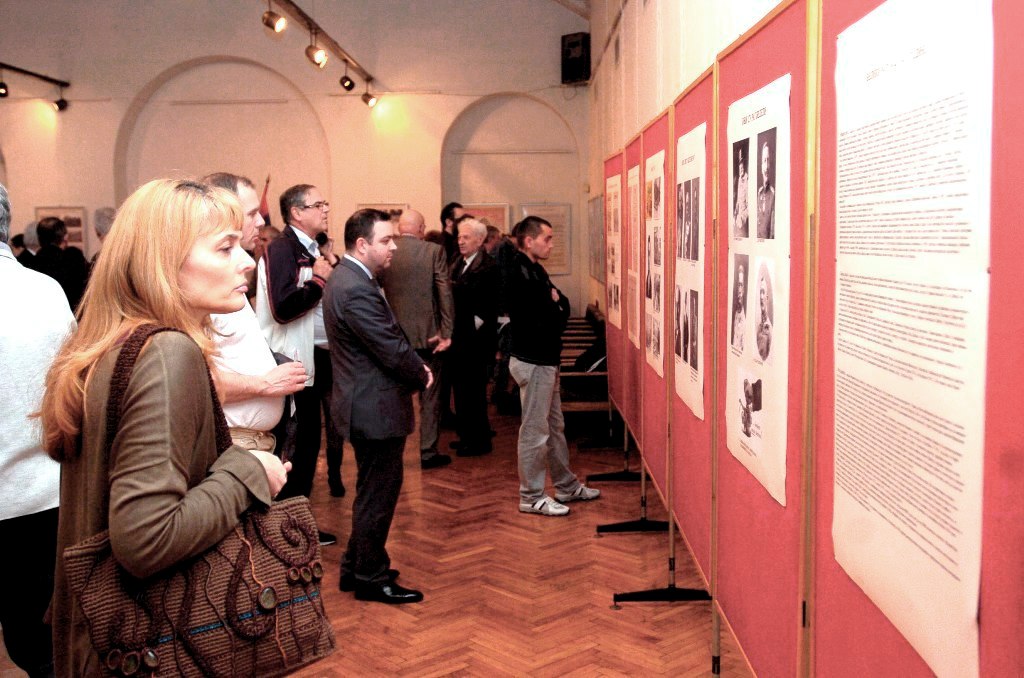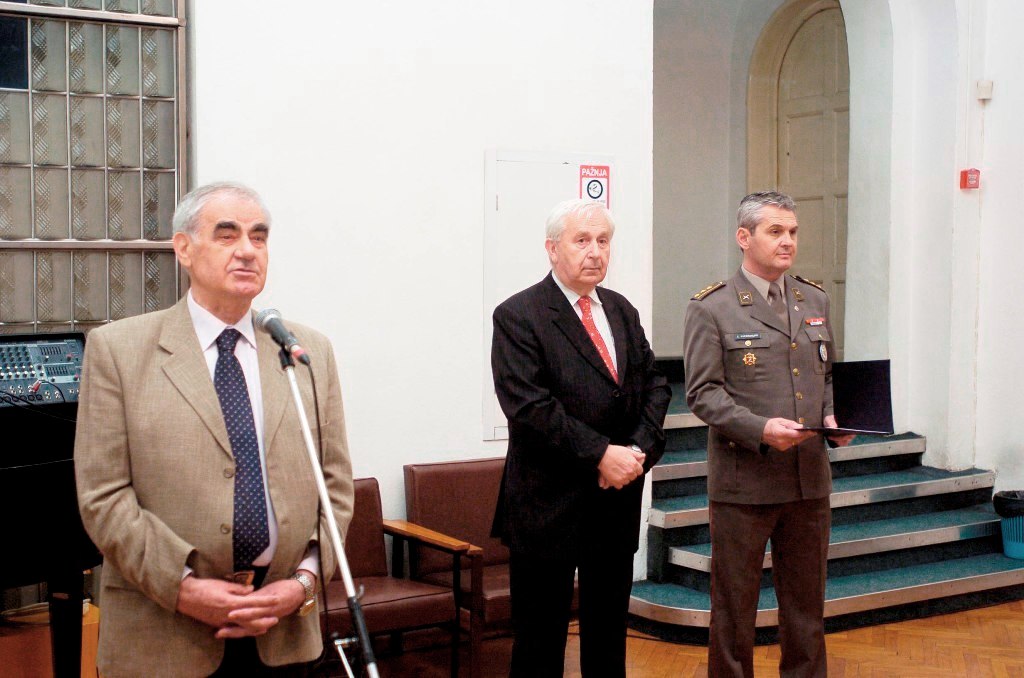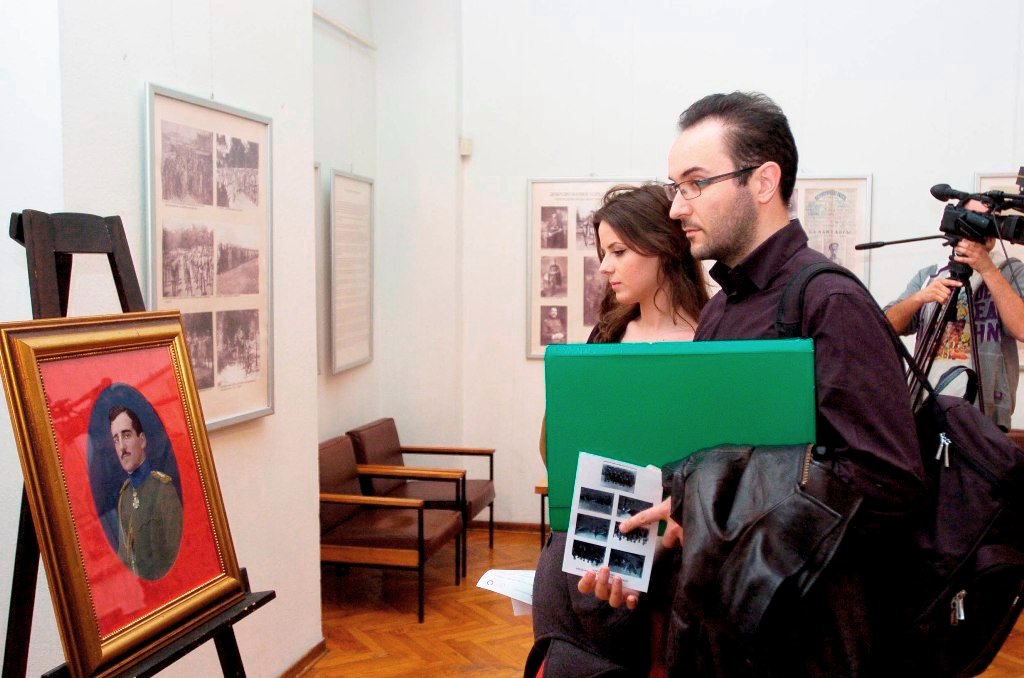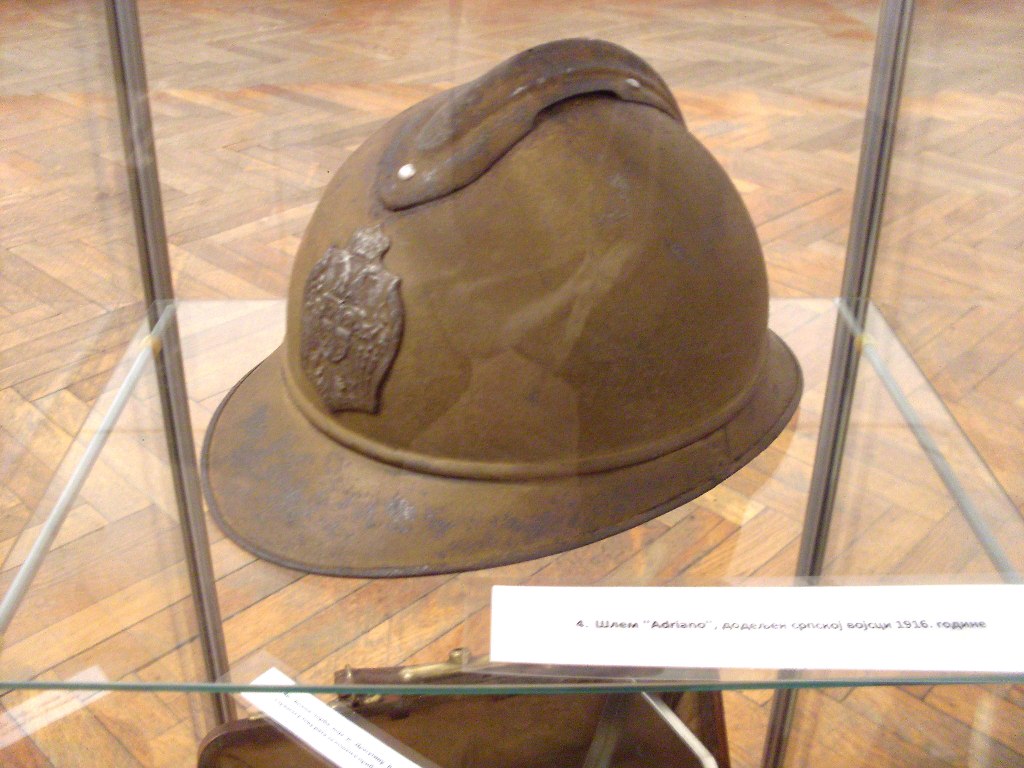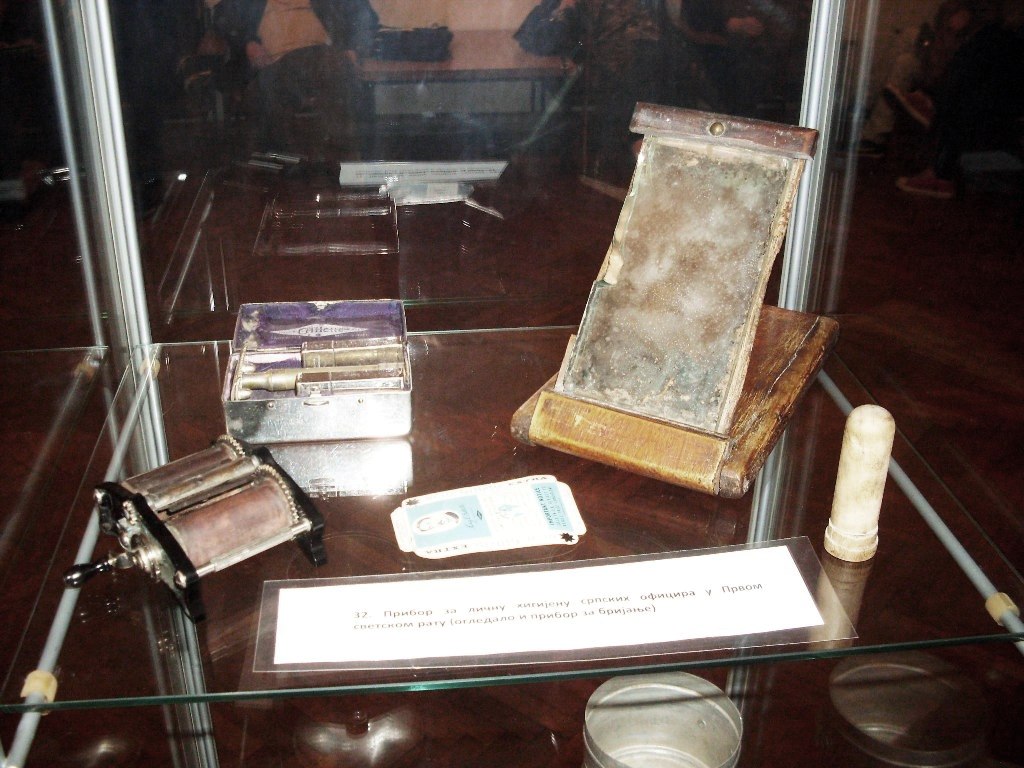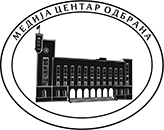05.05.2016
Exhibition on the First Serbian Volunteer Division opens at the Russian Club
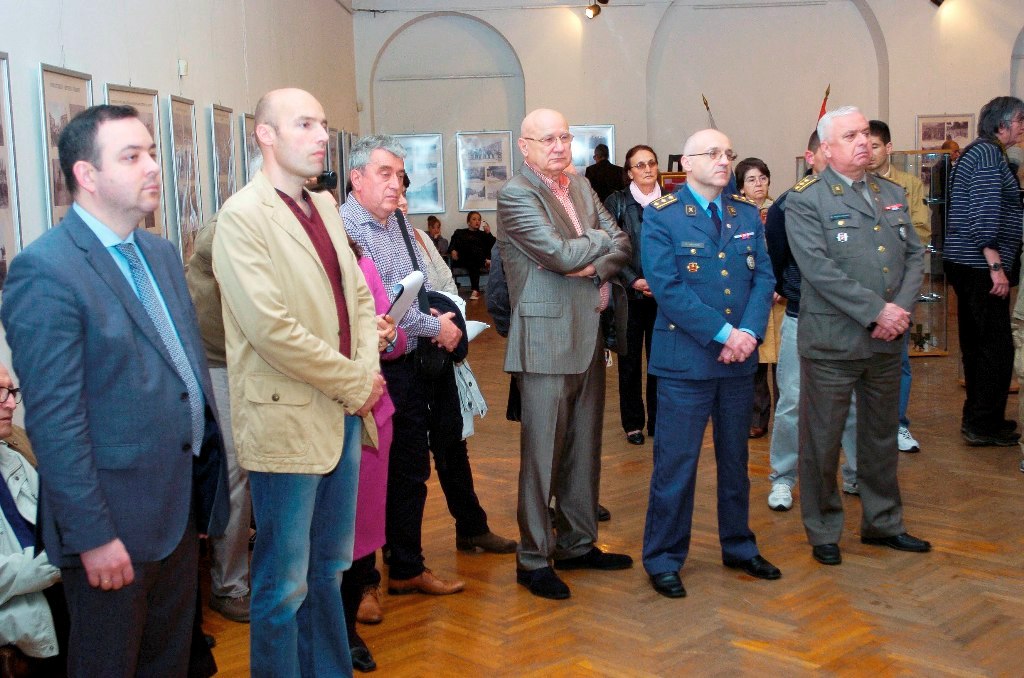 Visitors of the Gallery of the Russian Club in Belgrade as of today until 20 May, will be able to see the exhibition "The First Serbian Volunteer Division," by Prof. Miloje Prsic, retired colonel, Jovan Pejin, archival consultant, and Branko Kuzmanovic, research fellow.
Visitors of the Gallery of the Russian Club in Belgrade as of today until 20 May, will be able to see the exhibition "The First Serbian Volunteer Division," by Prof. Miloje Prsic, retired colonel, Jovan Pejin, archival consultant, and Branko Kuzmanovic, research fellow.Among the first visitors, the exhibition dedicated to the segment of military cooperation between the brotherly peoples – Russian and Serbian, viewed through the formation and functioning of the Serbian volunteer movements in Russia during the First World War, was seen by Minister of Defence Zoran Djordjevic, State Secretary Nenad Neric and Deputy Director of the Russian Club and the first Secretary of the Embassy of the Russian Federation in Serbia Roman Rikunov.
The idea of volunteer joining the army is deeply rooted in the Serbian people. In this regard the Great War was not an exception, and it was at the very beginning, in 1914, that volunteer corps began to be formed in Serbia from the Serbs who fled from Austria-Hungary, who were joined by the prisoners and the Serbs – soldiers of the broken Austro-Hungarian regiments.
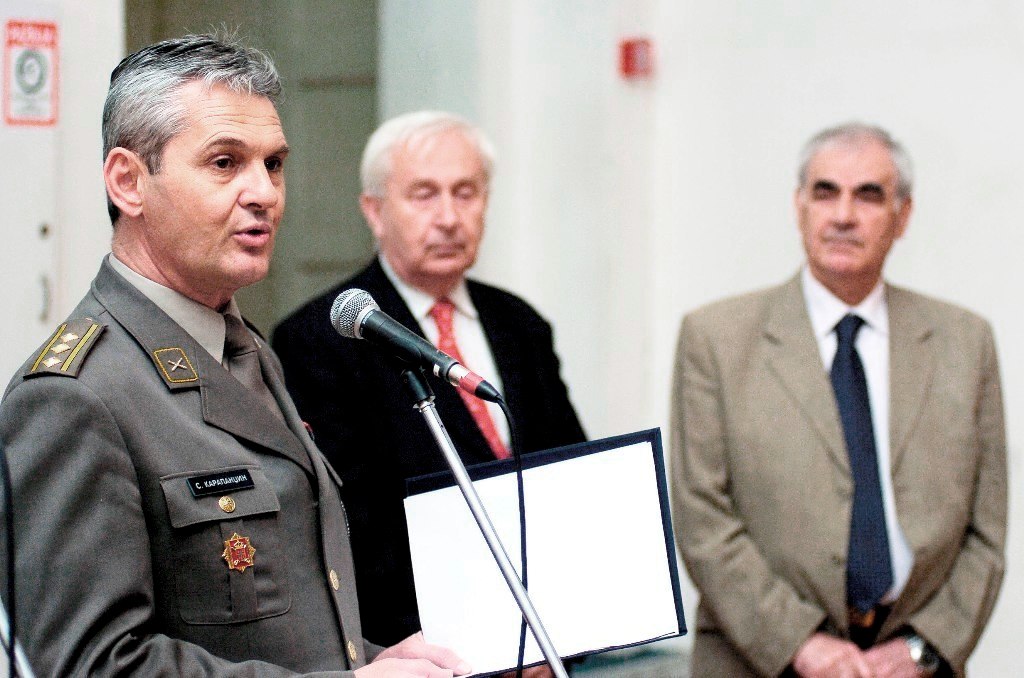 Jovan Pejin speaks about the exhibition as a presentation of rebellion of a nation – the Serbian people in Austria-Hungary, who did not want to fight against their brothers and whose fight eventually resulted in the occurrence of the volunteer movements among the Serbs who were prisoners of war, former Austro-Hungarian soldiers in Russia.
Jovan Pejin speaks about the exhibition as a presentation of rebellion of a nation – the Serbian people in Austria-Hungary, who did not want to fight against their brothers and whose fight eventually resulted in the occurrence of the volunteer movements among the Serbs who were prisoners of war, former Austro-Hungarian soldiers in Russia.By the imperial decree of November 1915, the Russian Emperor Nicholas II gave approval for the formation of Serbian volunteer units. As early as in April 1916, the First Serbian Volunteer Division consisted of 10,000 soldiers, and until their deployment to the front line it has grown to about 20,000 soldiers, NCOs and officers. Most of the volunteers were from Banat and Backa, Baranja and Srem (6,255), followed by Bosnia and Herzegovina (6177), former Military Border in Croatia and Slavonia (5,263), Dalmatia with Dubrovnik and Boka Kotorska, and the Serbian enclaves from Hungary and Croatia. According to its ethnic composition, 90% of the soldiers were the Serbs, with the participation of a number of Slovenes and Czechs and dozens of Croats.
The First Serbian Volunteer Division in Russia was equipped with Russian uniforms with Serbian national caps; commanding officers came from Corfu; it was armed with weapons from loot and is located in Odessa, where the volunteers were collected and trained. At the end of August 1916, the First Serbian Volunteer Division was transferred by trains and ships to Dobruja, together with the Russian army, where it had actions against the united Bulgarian-German-Turkish-Austoro-Hungarian army. The echo of the attacks of the Serbian Volunteer Army in Dobruja in autumn 1916 was such that the Central Powers had to withdraw 100,000 troops from the Salonika front. Soldiers and officers heroically fought, as evidenced by the praise and medals for valour awarded by the Serbian King Peter I, Russian Tsar Nicholas II and the Romanian king. After the February and then the October Revolution of 1917, the Serbian army in Russia experienced the revolutionary crisis and shortly after that, in two directions, they were transferred to Thessaloniki front, where the decisive battles took place.
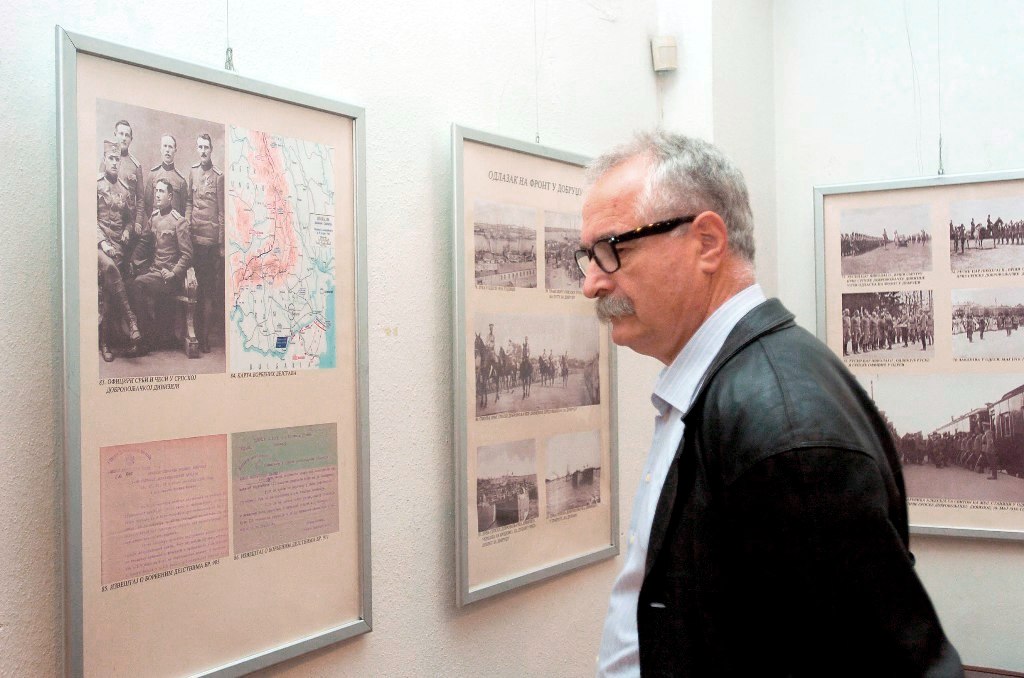 Professor Miloje Prsic pointed to the revisionist tendencies of some modern historians, to the detriment of Serbia, noting that the idea of the exhibition was just to discover the essence when it comes to defining the causes of war, the reason for its start, and then the very course of the war, by easy to grasp factography. He particular made reference to the geopolitical aspirations of the then Germany and Austria-Hungary, aimed at creating a new redistribution of interests in the world, which did not favour the then great powers England and France, what was the ultimate reason why the war of global proportions was inevitable, suggesting that the Balkans has always been and will be in the focus of interest of major powers.
Professor Miloje Prsic pointed to the revisionist tendencies of some modern historians, to the detriment of Serbia, noting that the idea of the exhibition was just to discover the essence when it comes to defining the causes of war, the reason for its start, and then the very course of the war, by easy to grasp factography. He particular made reference to the geopolitical aspirations of the then Germany and Austria-Hungary, aimed at creating a new redistribution of interests in the world, which did not favour the then great powers England and France, what was the ultimate reason why the war of global proportions was inevitable, suggesting that the Balkans has always been and will be in the focus of interest of major powers.The exhibition was opened by Colonel Stevica Karapandzin, director of the Odbrana Media Centre. Citing concrete examples from history, he reminded the audience of the "one comprehensive, valuable and spiritual intertwining of two nations of the same blood and same religion, two armies and personalities of two rulers, pointing to some segments of the Russian-Serbian alliance in the Great War, and often forgotten the size of the heroism of our ancestors – the volunteers".
 PHOTOGALLERY
PHOTOGALLERY
